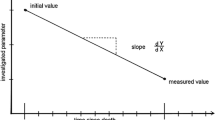Abstract
The period since death was estimated at the scene in 72 consecutive cases using the temperature-based nomogram method as the primary method and supplemented by examination of criteria such as lividity, rigor mortis, mechanical and electrical excitability of skeletal muscle and chemical excitability of the iris. A case-oriented, computer-assisted selection of the non-temperature-based methods and integration of the results into a common result of the compound method was made following a special logistic. The limits of the period since death as estimated by the nomogram were improved in 49 cases by including the non-temperature-based methods and also provided results in 4 cases where the temperature method could not be used. In a further 6 cases the non-temperature-based methods confirmed the limits estimated by the temperature method but in 14 cases a useful result could not be obtained. In only one of the cases investigated was the upper limit of the period since death, as estimated by the criterion re-establishment of rigor (8 h post-mortem), in contradiction with the period determined by the police investigations (9.4 h post-mortem).
Similar content being viewed by others
Author information
Authors and Affiliations
Additional information
Received: 18 November 1998 / Received in revised form: 25 June 1999
Rights and permissions
About this article
Cite this article
Henssge, C., Althaus, L., Bolt, J. et al. Experiences with a compound method for estimating the time since death . Int J Leg Med 113, 320–331 (2000). https://doi.org/10.1007/s004149900090
Published:
Issue Date:
DOI: https://doi.org/10.1007/s004149900090




